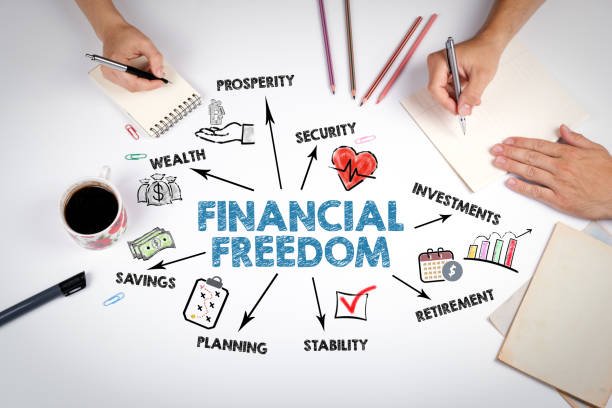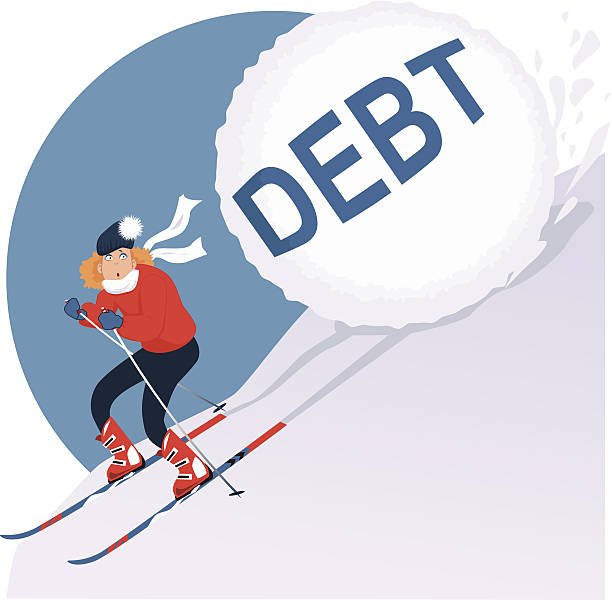What does “financial freedom” mean to you? For many, it’s not about owning a private jet or a mansion. It’s about having choices. It’s the freedom to leave a job you don’t love, pursue a passion project, or handle an unexpected emergency without panic. It’s about owning your time and your life.
This level of freedom isn’t reserved for the ultra-wealthy. It’s an achievable goal for anyone, at any age, with the right strategy and mindset. The journey is a marathon, not a sprint, and it’s never too early—or too late—to take the first step. Here are 7 actionable tips for financial freedom tailored for every stage of life.

The Universal Foundations of Financial Freedom (Tips 1-3)
No matter if you’re 22 or 52, these three principles are the bedrock of any successful plan for financial independence.
Tip 1: Create a Freedom Fund (And Pay Yourself First)
Before you pay your rent, your phone bill, or your groceries, you need to pay yourself. This means automating a portion of every paycheck to go directly into savings and investment accounts. Don’t wait to see what’s “left over” at the end of the month.
This “Freedom Fund” is the engine of your wealth. By making it the first and most important “bill” you pay, you prioritize your future self. This simple habit is one of the most powerful steps to financial freedom.

Tip 2: Eliminate High-Interest Debt Aggressively
High-interest debt, like that from credit cards or personal loans, is the direct enemy of freedom. It’s like trying to climb a mountain while carrying an anchor. The interest payments drain your income, kill your momentum, and keep you chained to the past.
Make a plan to attack this debt with intensity. Whether you use the “Debt Snowball” (paying off smallest debts first for motivation) or “Debt Avalanche” (paying off highest-interest debts first to save money), the goal is the same: achieve a debt-free life so your money can work for you, not for lenders.

Tip 3: Develop Multiple Income Streams
Relying on a single paycheck is risky in today’s economy. One of the key secrets to building wealth is to diversify your income. This doesn’t mean you need to work 80 hours a week. It can start small.
Consider freelancing with a skill you already have, starting a small online business, or looking into sources of passive income like investing in dividend-paying stocks. Even an extra few hundred dollars a month can dramatically accelerate your journey.
Your Roadmap in Your 20s: Building the Base (Tip 4)
If you’re in your 20s, you have the most powerful financial tool of all on your side: time.
Tip 4: Invest Early and Consistently, Even if It’s Small
The magic of compound interest—where your investment earnings start earning their own money—is a force of nature. Starting early means your money has decades to grow exponentially. You don’t need a lot of money to begin.
Focus on contributing consistently to a tax-advantaged retirement account like a 401(k) or a Roth IRA. If you don’t know where to start, low-cost index funds are a simple and effective way to own a piece of the entire market. Every dollar you invest in your 20s is worth many times more than a dollar invested in your 40s.
Accelerating in Your 30s & 40s: Maximizing Growth (Tip 5)
These decades are often your peak earning years. This is the time to press the accelerator on your financial planning.
Tip 5: Supercharge Your Savings & Avoid Lifestyle Creep
As you get raises and promotions, it’s tempting to upgrade your car, your house, and your overall lifestyle. This is called “lifestyle creep,” and it can silently sabotage your goals.
Instead of letting your spending expand with your income, make a conscious choice to divert the majority of every raise, bonus, or windfall directly into your investments. Increasing your savings rate from 10% to 15%, 20%, or even higher during these years is how you truly achieve financial freedom ahead of schedule.
Securing Freedom in Your 50s & Beyond: The Final Push (Tip 6)
In your 50s and 60s, the finish line is in sight. Your focus shifts from aggressive growth to capital preservation and smart planning for the future.
Tip 6: Focus on Catch-Up Contributions and Create a Withdrawal Strategy
The government allows individuals over 50 to contribute extra money to their retirement accounts each year. Take full advantage of these “catch-up contributions” to give your nest egg one final, powerful boost.
This is also the time to start thinking about how you’ll use your money. Work with a professional to create a smart withdrawal strategy that ensures your savings will last for the rest of your life. How to become financially free at this stage is less about accumulation and more about intelligent distribution.

The Mindset Shift That Unlocks Everything (Tip 7)
You can follow all the tips in the world, but without this final piece, you’ll struggle to stay motivated.
Tip 7: Define Your Version of Freedom (And Track Your Progress)
Financial freedom isn’t a universal number. For one person, it might be $1 million. for another, it could be having $50,000 in passive income per year. You need to define what “enough” means for you. What kind of life do you want to live? Get specific.
Once you have your target, track your progress. The single best metric is your net worth (your assets minus your liabilities). Watching this number grow over time is incredibly motivating and shows you that your hard work and discipline are paying off.
While these tips provide the “how,” understanding the “why” can transform your journey. If you’re ready for a profound shift in your relationship with money, we highly recommend reading “Your Money or Your Life.” This book isn’t just about finance; it’s about calculating how much of your life energy you trade for money. This single concept can fundamentally change your spending habits and accelerate your path to financial freedom more than any spreadsheet.
Your Journey Starts Today
Achieving financial freedom is a testament to consistency, discipline, and a clear vision for the life you want. No matter your age or your current financial situation, it is within your reach.
Don’t be overwhelmed by the long road ahead. Just pick one tip from this list and start today. Your future self will thank you for it. Sources
Tired of juggling spreadsheets and wondering where your money truly goes each month? It’s time to let technology simplify your financial life. We invite you to discover the perfect tool for your goals in our guide to the 7 Best Personal Finance Apps of 2025 (Reviewed & Compared).
